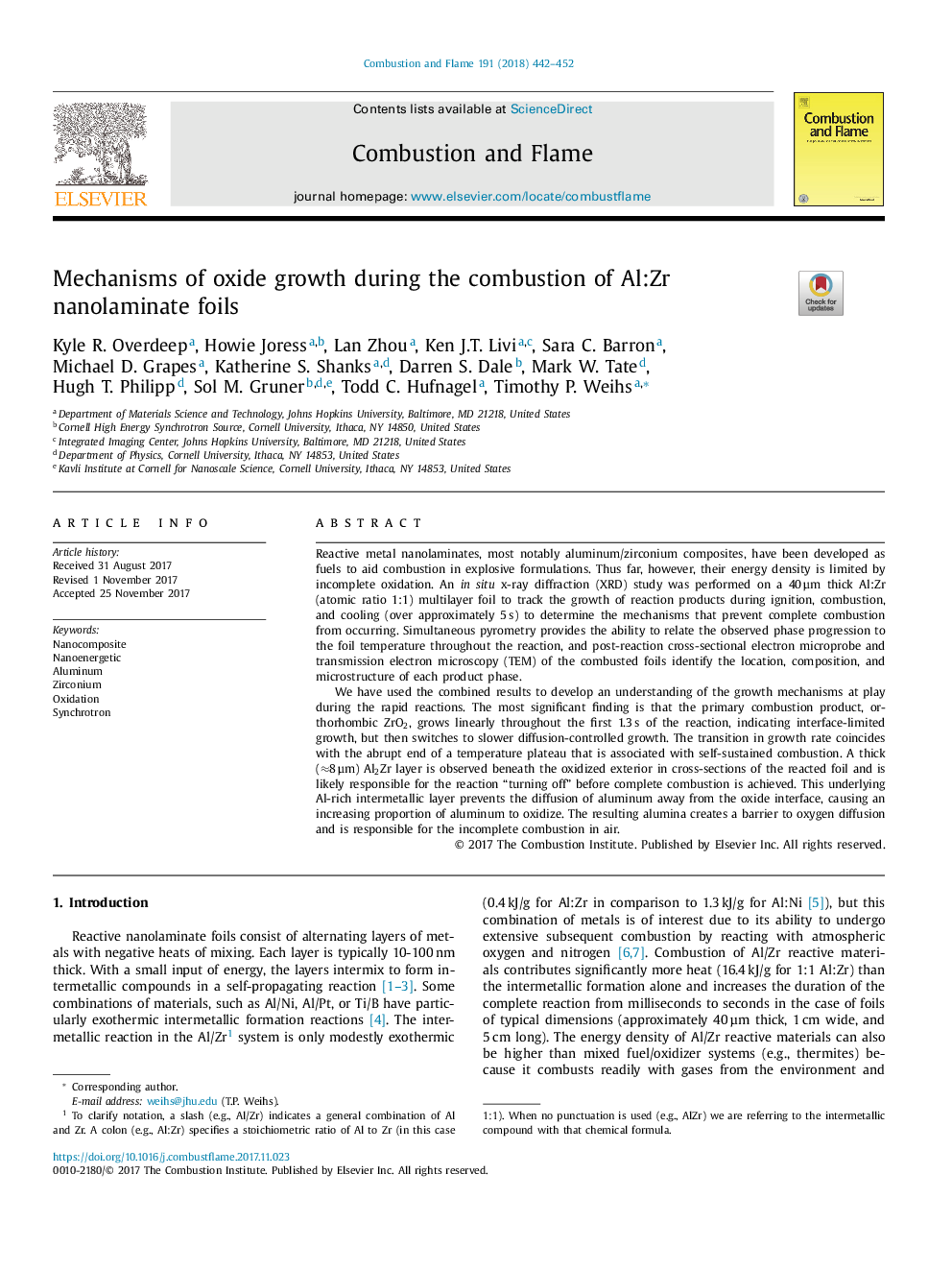| Article ID | Journal | Published Year | Pages | File Type |
|---|---|---|---|---|
| 6593774 | Combustion and Flame | 2018 | 11 Pages |
Abstract
We have used the combined results to develop an understanding of the growth mechanisms at play during the rapid reactions. The most significant finding is that the primary combustion product, orthorhombic ZrO2, grows linearly throughout the first 1.3â¯s of the reaction, indicating interface-limited growth, but then switches to slower diffusion-controlled growth. The transition in growth rate coincides with the abrupt end of a temperature plateau that is associated with self-sustained combustion. A thick (â8â¯Âµm) Al2Zr layer is observed beneath the oxidized exterior in cross-sections of the reacted foil and is likely responsible for the reaction “turning off” before complete combustion is achieved. This underlying Al-rich intermetallic layer prevents the diffusion of aluminum away from the oxide interface, causing an increasing proportion of aluminum to oxidize. The resulting alumina creates a barrier to oxygen diffusion and is responsible for the incomplete combustion in air.
Related Topics
Physical Sciences and Engineering
Chemical Engineering
Chemical Engineering (General)
Authors
Kyle R. Overdeep, Howie Joress, Lan Zhou, Ken J.T. Livi, Sara C. Barron, Michael D. Grapes, Katherine S. Shanks, Darren S. Dale, Mark W. Tate, Hugh T. Philipp, Sol M. Gruner, Todd C. Hufnagel, Timothy P. Weihs,
